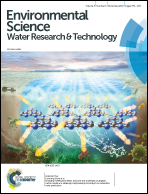Treatment of metallurgical industry wastewater for organic contaminant removal in China: status, challenges, and perspectives
Abstract
Metallurgy is essential for socioeconomic development, and the process discharges waste containing a variety of toxic and hazardous compounds. Robust disposal technologies and processes for treating metallurgical industry wastewater are urgently researched by scientific and industrial communities to meet the increasingly stringent environmental rules and regulations. This paper aims to provide a timely review on the status of metallurgical wastewater treatment in China with a focus on the removal of organics. The primary sources of organic contaminants in the metallurgical industry are coke quenching, steel rolling, solvent extraction, and electroplating. The characteristics of these pollutants are specific to technologies and work flows in the respective process in terms of their structure, physicochemical nature and concentrations. This situation necessitates tailor-made treatment/disposal methods that are the highlights of this review and discussed with regard to their pros and cons. Although this paper focuses on the R&D efforts in China, the information and experiences can certainly be applied to other nations' metallurgical wastewater treatment.



 Please wait while we load your content...
Please wait while we load your content...